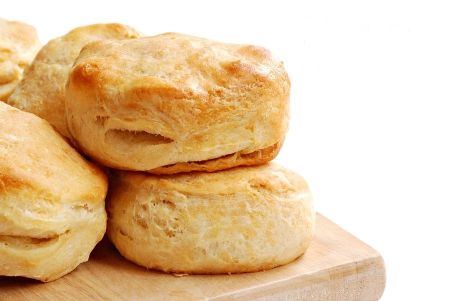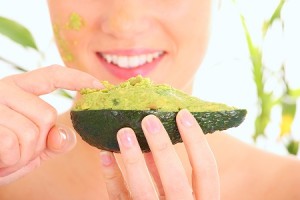

One of the biggest challenges that people who are trying to lose weight encounter is hunger. With a focus on eating less, people naturally will eat smaller portions of everyday foods. While there is some logic to that, it’s also important to note that simply restricting food intake can have some unintended consequences such as feeling deprived; ever encountered the feeling of dissatisfaction after eating a small meal like one piece of toast and an egg? This kind of eating doesn’t have staying power; you’ll be hungry fairly quickly again.
Also, eating a small volume of food won’t increase satiety the way eating larger amounts of bulkier, ‘high volume’ food can because the signals that are normally sent to the brain to say ‘stop eating, I’ve had enough’ aren’t strong enough.

This goes for highly processed and fast foods as well which tend to be highly refined and concentrated; foods that have a lot of calories and don’t require a lot of chewing because of something referred to as ‘particle size’. Whole food, even when properly chewed, will still have larger particles when swallowed and fills us up and promote satiety better than highly refined, processed foods. When we eat food, both our stomachs and gut are stretched somewhat, sending a signal, via neurotransmitters, that there’s enough food on board.
Eating foods that are loaded with nutrients and lower in calories, but bulkier, which also help to keep us feeling full longer, are the key to building meals that help to keep us satisfied while keeping hunger at bay. These qualities come down to these three variables: protein, fat and fiber. (https://expo.aspe.org/)
Meal Planning 101
Protein
Protein is a great ally for anyone who is trying to lose weight. Eating a protein-rich food at each meal and snack will give your body the building blocks to help maintain muscle especially if you’re engaged in some kind of physical activity. Protein also has the added benefit of helping you to fill satisfied after eating, more so than if you just ate a carbohydrate-rich meal. Comparing a breakfast of a bagel with jam versus one where there is added protein, like eggs, the protein-rich meal will help to keep hunger away longer. Protein also helps to increase the production of neurotransmitters, chemicals that help different parts of the body to communicate, which give a sense of contentment, and pleasure after eating.
Protein-rich foods include:
- Eggs, cheese, cottage or ricotta cheese, milk, yogurt, Greek yogurt
- Beef, chicken, lamb, pork, turkey, fish, seafood
- Chickpeas, lentils, dried peas & beans
- Protein powders: whey, hemp, pea, egg white, rice or fermented soy
Fat
Fat has gotten a bad rap over the past several decades. Eating fat was once thought to increase the risk for heart disease and poor health; we now know that this isn’t true. Fat quality is still an important consideration when it comes to overall health however. Including small amounts of added fat or including foods that have a little fat in them is another effective way at increasing satiety. Fat helps to slow down how quickly food leaves our stomachs and the rate of digestion; by doing so, can help to keep hunger in check in between meals.
Examples of healthy added fats include:
- Oils such as olive, avocado, hemp, peanut, or organic canola
- Small amounts of butter, sesame or walnut oil for flavour
Foods that naturally contain fat also help to provide satiety:
- Lower fat, but not non-fat milk, yogurt, cheeses
- Nuts, seeds, nut and seed butters like tahini, cashew, almond, peanut
- Fattier fish, whole eggs, meats and poultry
Fiber
Fiber can be a great tool for your anti-hunger toolbox. Eating whole foods that are rich in fiber can help to fill you up; when eaten at the same meal with foods that supply protein and fat, fiber helps to slow down digestion resulting in a slower rise in blood sugar. As well, foods rich in fiber tend to be self-limiting meaning that it’s fairly difficult to over eat them. Try eating 8 medium apples in one sitting compared to eating a gourmet hamburger; both have about the same number of calories but it would be much harder to have to try and eat the apples. You’d be so full, it would be uncomfortable.
This is the strategy of eating higher fiber foods and eating to satiety, or a comfortable sense of fullness; your brain gets the signal that you’ve eaten enough without the obvious perception that you’ve restricted portions too much. Fiber-rich foods are found in the plant kingdom; emphasizing whole fruits, vegetables, whole grains and grain products is key. Your best partner are low-starch vegetables; too numerous to list but include things like broccoli, cauliflower, radish, onions, eggplant, asparagus, bean sprouts, Brussels sprouts, cucumber, peppers, chard, kale, mushrooms, zucchini, tomatoes, green beans, cabbage, turnip and even carrots, and beets. While carrots and beets do have more starch than the other examples, their high fiber and water content make them difficult to over eat.
A few example of high fiber foods include:
- Ground flax, and chia seeds
- Lower starch vegetables
- Whole nuts and seeds [in small amounts]
- Whole fruits
- Whole, intact grains like teff, quinoa, brown, black and wild rice, buckwheat, steel cut oats, oat bran, amaranth, kamut or millet.
- Pulses: chickpeas, lentils, dried peas and beans
Check out the following examples of meals built on high volume eating which include foods rich in protein, fiber, and water with some added fat to help keep hunger in check.
Sample breakfast
Instead of this | Try this |
Bagel Margarine Jam | Scrambled eggs (2) 1/4 avocado [add pinch of salt and mash, put on toast] 1 piece of whole grain toast 1 cup of chopped strawberries |
Sample lunch
Instead of this | Try this |
1 ½ cups of pasta with marinara sauce | Large salad 2 cups of greens 1 to 1 ½ cups of chopped low-starch vegetables [radish, green onion, broccoli, cucumber, tomato, sweet peppers] Balsamic vinegar 2 tsp sesame oil ½ cup black beans Dried basil and chili peppers 3oz roasted chicken breast 175g container of plain yogurt with cinnamon |
Sample dinner
Instead of this | Try this |
5oz of grilled fish ¾ cup mashed potatoes ½ cup steamed broccoli | 5oz of grilled fish 2 to 3 cups of steamed low starch vegetables [cauliflower, eggplant, onions] 1 Tbsp of olive oil Pepper and a pinch of salt ½ cup quinoa |
To learn more about healthy meal planning with the Trim Down Club click here.
Comments 11
Leave a Reply
You must be logged in to post a comment.




Hi, Jehebenstreit. Chicken is a great way to curb hunger, but it can’t ever substitute for produce (sorry). Try different vegetable-type recipes, and you may find some you like; for example, a hearty vegetable soup certainly counts, and is great at curbing your appetite.
So, this is why my menus look so AWFUL. I am allergic to yeast in any bread or aged cheese. I am Allergic to all citric-red tomato- and to any pepper(s). I am allergic to eggplant and quinoa and don’t tolerate MOLD (vinegar). Lastly I really don’t like salad more than twice, or fish more than once a week. I am really going to have to work on eating vegetables! Can’t I eat more Chicken?
Hi, Carol. The snacks listed in the Express Meal Plans and in the menus generated in the Menu Planner application provide the best examples. You can donate the Express Plans by entering the first category in “My Downloads” (above) and scrolling down.
Hi, Starko56. No, it is not implying that broccoli itself is not good, but rather that the amount is very small – so the larger portion is really the focus.
What would the 3 snacks be for these recipes to include the 6 meals a day?
This sample dinner implies that broccoli is not good? I thought it was on par with cauliflower and eggplant!
Nutritional requirements for protein, fat and carb is individualized; there isn’t a one size fits all approach. Eating a balanced diet will likely hit the mark; beyond that, it has to be assessed on a personal level
How many grams of protein, carbs, fat, etc should we work towards consuming each day. It helps that most of the recipes have these measurements but I’ve always been confused about how much of each. Is there an easy formula to remember?
Thanks! Jane
@MaryNGerrish – this is a general guidelines about ‘meal building’, try to incorporate what you can based on your options/living conditions. Whole fruits and vegetables are one of the easiest ways to include foods that will help to fill you up easily and some of which don’t need refrigeration
This will Abe a real challenge for me as my living conditions are very limited. I have one room with no water and very limited refrigeration and cooking. I have figured out a few things like taking lunch bag. with ice with nuts and fruit.
I have an intolerance to cauliflower ,even the smell of it can cause me to vomit.with broccoli I did mange to eat it but suffered with mouth gas from it,so I tend not to eat it to save the discomfort